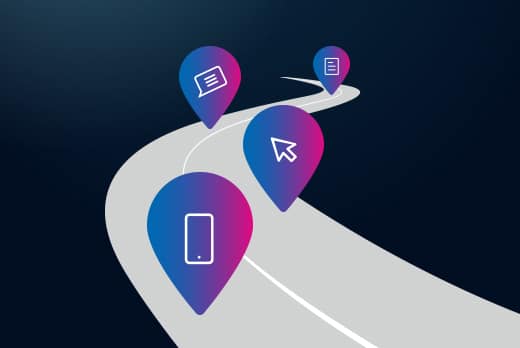By Rick Halton, VP Product & Marketing, Lumeon
As we tour the healthcare providers across the US, we’re clearly seeing a massive shift in mindset from the traditional in-person experience toward a modern, web-based digital experience. Gone are the days when simple, hand-cranked appointment reminders were sufficient. With more than 70 percent of patients now researching their next appointment online, providers are looking to grab this opportunity and direct patient traffic toward their own health system.
But, the journey to digital is perhaps not so simple. Old habits often die hard and many providers lack the digital know-how and the technology stack to design and deploy online, patient-centric experiences.
Just automating appointment reminders might appear to be complicated enough, requiring bi-directional integration with the EHR and scheduling systems. However, building a digital experience requires a whole new level of thought and planning – it requires a shift from appointment-centric thinking to patient-centric thinking. Six Sigma business analysts at Lumeon are continually surprised that provider processes entirely miss the patient experience, and instead focus on solving internal administrative and billing spaghetti, rather than focusing on a fluid, seamless experience for consumer.
On our travels here at Lumeon, we are increasingly seeing health providers tackle digital patient experiences in four steps. While there is more to it, these steps provide core building blocks to begin to create the Amazon-like online experience, always keeping patients engaged, up-to-date, and following through to keep them coming back. Simply put, the aim is to create a provider branded experience that constantly delights patients along the way, while optimally coordinating care resources around their journey.
Here’s how:
Step 1: Digital Appointment Reminders (DAR)
This is a shift from traditional static appointment reminders to fully automated reminders that are always in sync with your scheduling system. They also provide multimodal patient communication, respecting the patient language, communication, and consent preferences while supporting more advanced requirements like sequenced appointments, emergency messages, education classes, surveys, and appointment recall.
Step 2: Digital Front Door (DFD)
The Digital Front Door, also known as digital booking, takes the appointment experience all the way upstream to the provider website, through a branded landing page that captures online bookings. The DFD incorporates a step-by-step booking process that evaluates the patient needs by gathering their preferences and appointment needs and then offers the patient the most advantageous and convenient appointments. It will also bill the patient if self-pay or co-pay is required. Beneath this website, smart technologies integrate with the scheduling system in real time, ensuring the booking service is aware of anything that might limit the availability of an appointment type, such as skills and certifications, physician and room availability, or resource capacity and other modifiers. The trick with online booking is often to start with lower acuity, less complex appointment types and then evolve over time.
Step 3: Digital Interactive Dialogues (DID)
By providing an automated, chat-like service, providers can proactively reach out and communicate with patients at critical times, without any care team involvement. Imagine having the ability to automatically ask a patient one day before surgery whether they are well enough to attend, and if the patient replies ‘NO’, then digging in and asking why. There are so many other valuable use cases, such as asking a patient to complete pre-appointment checklists, or to review and score their appointment experience. By closing the loop with the patient in this way, you have the opportunity to provide a much more round appointment experience, saving time, money, and reducing patient stress.
Step 4: Digital Follow-Up (DFU)
Lastly, Digital Follow-Up uses electronic forms to engage the patient in a richer dialogue that can assess their preferences, acuity, risks, satisfaction, outcomes, compliance, and other needs. These forms can be made available through email, website or mobile apps, allowing the provider to deliver a deeper level of patient engagement at any point in the patient journey. Forms can also be dynamic, only presenting a few relevant questions, depending on answers to previous questions. By then integrating triage tools, checklists, and predictive algorithms, health providers can combine forms with automated workflow, personalizing tasks to patient needs.
Importantly, providers must have the ability to design their Digital Appointment Experience and then the flexibility to evolve it over time, ensuring it is both orchestrated and integrated. Orchestration means that it is driven by workflow logic that coordinates both people and tasks while monitoring different patient states along the way. Integration means that workflow needs to be capable of enabling the provider app and web experience while sharing data with the provider EHR, scheduling, and other systems.
The Digital Appointment Experience represents an exciting frontier as health payers and providers rise to address the needs of a new generation of younger people hooked on convenient, virtual experiences. The challenge for many providers will be how to tackle the first piece of this puzzle and avoid short-term silo thinking, while implementing steps toward a fluid digital patient journey, from first contact to recovery.


